Previous 1 ... 175 176 177 178 179 180 181 ... 241 Next

A team of researchers has observed the fastest moving star ever recorded. In their paper published in The Astrophysical Journal, the group describes their observation and study of stars circling close to the black hole at the center of the Milky Way galaxy, and what they observed.
Space scientists have known for some time that there is a black hole situated near the center of the Milky Way galaxy (Sagittarius A*), and have theorized that there are stars that circle very close to it—known as squeezars, they are believed to orbit so closely to the black hole that they are accelerated to incredible speeds during parts of their orbits. In their work, the researchers have been studying a group of stars that exist close to the black hole, each starting with the letter "S" to indicate their closeness to Sagittarius A*.
https://phys.org/news/2020-08-fastest-star-1.html
Surface of Comet 67P
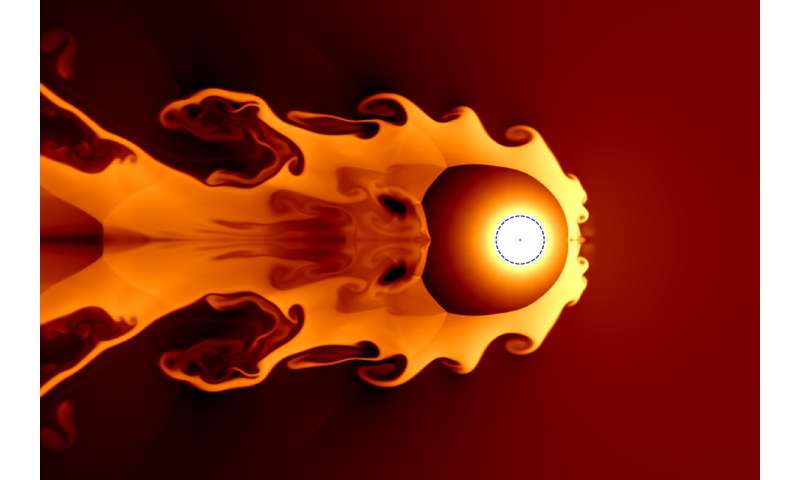
Imagine reading by the light of an exploded star, brighter than a full moon—it might be fun to think about, but this scene is the prelude to a disaster when the radiation devastates life as we know it. Killer cosmic rays from nearby supernovae could be the culprit behind at least one mass extinction event, researchers said, and finding certain radioactive isotopes in Earth's rock record could confirm this scenario.
A new study led by University of Illinois, Urbana-Champaign astronomy and physics professor Brian Fields explores the possibility that astronomical events were responsible for an extinction event 359 million years ago, at the boundary between the Devonian and Carboniferous periods.
The paper is published in the Proceedings of the National Academy of Sciences.
The team concentrated on the Devonian-Carboniferous boundary because those rocks contain hundreds of thousands of generations of plant spores that appear to be sunburnt by ultraviolet light—evidence of a long-lasting ozone-depletion event.
"Earth-based catastrophes such as large-scale volcanism and global warming can destroy the ozone layer, too, but evidence for those is inconclusive for the time interval in question," Fields said. "Instead, we propose that one or more supernova explosions, about 65 light-years away from Earth, could have been responsible for the protracted loss of ozone."
"To put this into perspective, one of the closest supernova threats today is from the star Betelgeuse, which is over 600 light-years away and well outside of the kill distance of 25 light-years," said graduate student and study co-author Adrienne Ertel.
The team explored other astrophysical causes for ozone depletion, such as meteorite impacts, solar eruptions and gamma-ray bursts. "But these events end quickly and are unlikely to cause the long-lasting ozone depletion that happened at the end of the Devonian period," said graduate student and study co-author Jesse Miller.
https://phys.org/news/2020-08-stars-mas ... earth.html
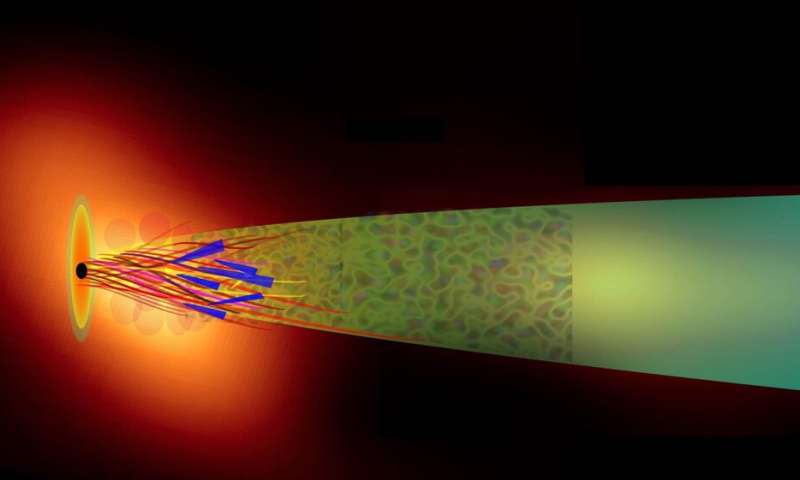
Black holes are at the center of almost all galaxies that have been studied so far. They have an unimaginably large mass and therefore attract matter, gas and even light. But they can also emit matter in the form of plasma jets—a kind of plasma beam that is ejected from the center of the galaxy with tremendous energy. A plasma jet can extend several hundred thousand light years far into space.
When this intense radiation is emitted, the black hole remains hidden because the light rays near it are strongly bent leading to the appearance of a shadow. This was recently reported by researchers of the Event Horizon Telescope (EHT) collaboration for the massive black hole in the giant ellipse galaxy M87.
In quasar 3C279—also a black hole—the EHT team found another phenomenon: At a distance of more than a thousand times the shadow of the black hole, the core of a plasma jet suddenly lit up. How the energy for this jet could get there as if through an invisible chimney was not yet known.
Extremely flickering gamma radiation detected
This quasar has now been observed with the NASA space telescope Fermi-LAT by the astrophysicist Amit Shukla, who until 2018 did research at Julius-Maximilians-Universität (JMU) Würzburg in Bavaria, Germany. He now is working at the Indian Institute of Technology in Indore. Shukla discovered that the core of the jet, which was found in the millimeter wavelength range, also emits high-energy gamma radiation, but with an extremely flickering brightness. This brightness can double within a few minutes, as reported in the journal Nature Communications.
The special pattern of the sequence of brightness changes is characteristic of a universal process called magnetic reconnection, which occurs in many astrophysical objects with strong magnetic fields. Solar activity also has to do with the dynamics of magnetic fields and reconnection. This was recently demonstrated by observing 'campfires' in the solar atmosphere with the Solar Orbiter mission of the European Space Agency ESA.
https://phys.org/news/2020-08-black-hol ... netic.html
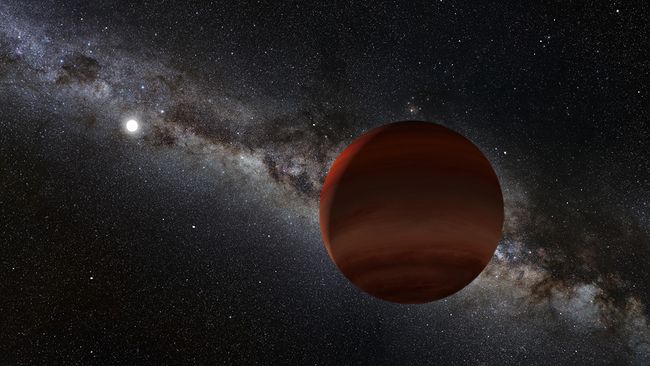
Citizen scientists have spotted almost 100 of our sun's nearest neighbors.
In a new study, members of the public — including both professional scientists and volunteers — discovered 95 brown dwarfs (celestial objects too big to be considered planets and too small to be considered stars) near our sun through the NASA-funded citizen science project Backyard Worlds: Planet 9. They made this discovery with the help of astronomers using the National Science Foundations National Optical-Infrared Astronomy Research Laboratory.
"These cool worlds offer the opportunity for new insights into the formation and atmospheres of planets beyond the solar system," Aaron Meisner from the National Science Foundation's NOIRLab and the lead author of the new paper, said in a statement. "This collection of cool brown dwarfs also allows us to accurately estimate the number of free-floating worlds roaming interstellar space near the sun."
"This paper is evidence that the solar neighborhood is still uncharted territory and citizen scientists are excellent astronomical cartographers," coauthor Jackie Faherty of the American Museum of Natural History in New York, said in a NASA statement. "Mapping the coldest brown dwarfs down to the lowest masses gives us key insights into the low-mass star-formation process while providing a target list for detailed studies of the atmospheres of Jupiter analogs."
Brown dwarfs are unusual celestial objects — much heavier than planets but not massive enough to become stars. The celestial objects can be seriously hot (think thousands of degrees Fahrenheit), but these 95 newly-discovered neighbors are surprisingly cool. Some of these weird worlds are even relatively close to Earth's temperature and could be cool enough to have water clouds in their atmospheres, according to the statement.
https://www.space.com/citizen-scientist ... warfs.html
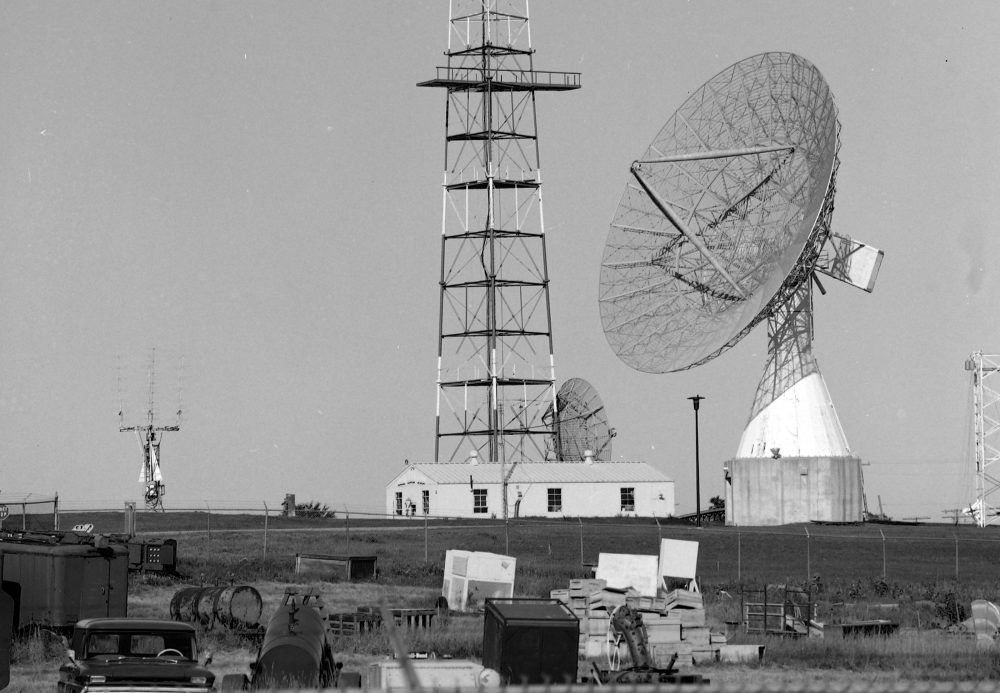
Get ready to say goodbye to the Kennedy Antenna – a parabolic dish used to track the 1962 satellite that established Canada as the third country in space.
The Canadian Space Agency says the 60-foot artifact from the country’s pioneering space era will become scrap metal , according to Blacklock’s Reporter.
“This is historically significant,” said Marcus Leech, president of the Canadian Centre for Experimental Radio Astronomy of Smiths Falls, Ont.
“It’s a shame, but the Space Agency succumbed to pressure to remove it.”
The Kennedy Antenna was set up in Ottawa at a Department of National Defence compound to track Alouette 1, Canada’s first satellite.
. . .
The antenna, named for its now-defunct Massachusetts manufacturer D.S. Kennedy Company, was decommissioned in 1987 while the Alouette satellite remains in space after 58 years with long-expired batteries.
“It is still in orbit but it is not active,” said CSA spokesperson Andrea Matte.
https://www.theguardian.pe.ca/news/cana ... nd-488792/

While appearing as a delicate and light veil draped across the sky, this image from the NASA/ESA Hubble Space Telescope actually depicts a small section of the Cygnus supernova blast wave, located around 2,400 light-years away. The name of the supernova remnant comes from its position in the northern constellation of Cygnus (the Swan), where it covers an area 36 times larger than the full Moon.
The original supernova explosion blasted apart a dying star about 20 times more massive than our Sun between 10,000 and 20,000 years ago. Since then, the remnant has expanded 60 light-years from its center. The shockwave marks the outer edge of the supernova remnant and continues to expand at around 220 miles per second. The interaction of the ejected material and the low-density interstellar material swept up by the shockwave forms the distinctive veil-like structure seen in this image.
https://www.nasa.gov/image-feature/godd ... llar-blast
The heaviest black hole merger detected to date provides evidence for a progenitor black hole in a theoretically forbidden gap and for a resulting black hole in the long-sought intermediate mass range.
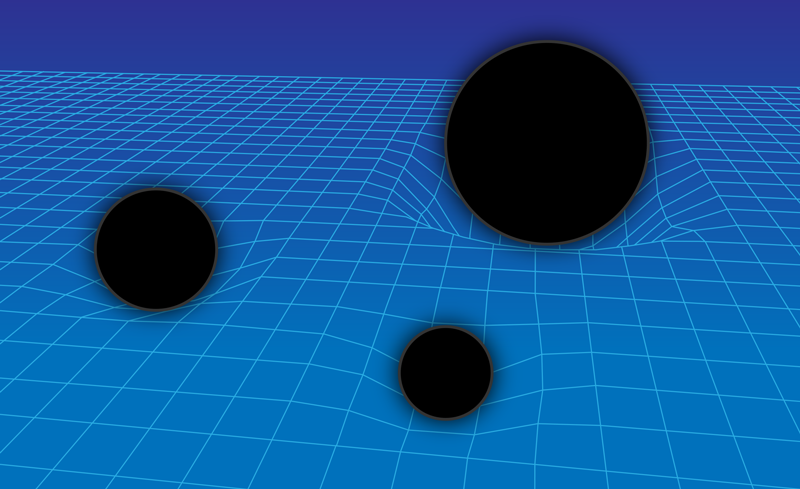
The observation of gravitational waves has opened a new window on the Universe, providing the first direct proof of the existence of black holes as described by general relativity [1]. With ten black hole mergers confirmed since 2015, these observations have revealed black holes with a large range of masses and with different spins. Now, the LIGO Collaboration and the Virgo Collaboration have reported the detection of the heaviest black hole merger to date—a 65-solar-mass black hole and an 85-solar-mass black hole coalescing to form a 142-solar-mass black hole (Fig. 1) [2, 3]. Two aspects make this event exceptional. First, the size of the larger progenitor (85 solar masses) falls in a “gap” where black holes are not expected to form by conventional mechanisms. Second, the detection of the 142-solar-mass remnant is the first direct observation of an intermediate-mass black hole (IMBH)—a class of black holes with masses in between about one hundred and tens of thousands of solar masses.
According to Einstein’s equations, black holes can have any mass. However, in our Universe black holes of a certain mass can only exist if there is an astrophysical process for creating them. The collapse of massive stars provides one key pathway to black hole formation that sets some constraints on expected black hole masses.
A stellar-mass black hole is formed when a star dies in a dramatic supernova explosion. The explosion occurs once nuclear fusion has turned most of the star’s core into iron. At this point, the star is out of nuclear fuel, and its core begins to collapse onto itself. If the star mass is larger than a certain value (estimated to be at least 2.17 solar masses [4]), its core is doomed to collapse to a black hole. Black holes formed in this way can have a wide range of masses but only up to a maximum value set by so-called pair instability [5].
Pair instability is a phenomenon that drains a star’s energy through the production of electron-positron pairs. In a hot star, the core produces gamma rays that exert “photon pressure” on the outer stellar layers, supporting them against the gravitational pull. If the star core is larger than about 65 solar masses, however, the gamma rays efficiently convert into electron-positron pairs, and this photon support wanes. The outer layers then collapse inwards, the nuclear burning accelerates in a runaway fashion, and the star blows apart without leaving behind any black hole remnant. This picture holds up to about 135 solar masses, beyond which the star directly collapses into a black hole. The instability thus creates a mass gap—between ∼65 and ∼135 solar masses, where black holes aren’t theoretically expected [6]. Until now, none of the progenitor black holes detected by LIGO and Virgo lay within this gap [1].
https://physics.aps.org/articles/v13/111
Another story on the above black hole merger, but with more interesting graphs and videos:
Meet GW190521—a black-hole merger for the record books
A little trivia from the above black hole merger:
85 + 66 = 151, not 142. So 9 masses, the equivalent of our sun, were converted into enough energy to contract/expand the entire universe less than the width of a hair.
The event occurred 7 billion years ago, but the system is 16 billion light years away. "How" you ask? Because we have been moving away from each other at an expanding rate. So another 9 billion light years of space has been added between us in that time.
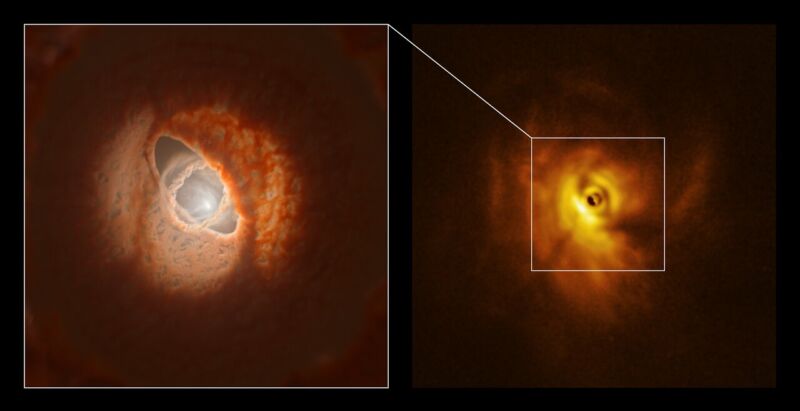
If all we knew about was our own Solar System—a condition that was largely true even two decades ago—we'd think that planets are all neat and tidy. All of the familiar ones orbit in a single plane aligned with the Sun's equator and move in the same direction. And that's exactly how they should behave, considering that planets form from a single disk of material rotating around the star.
But as we've gotten a clearer picture of the diversity of exosolar systems out there, we've seen some pretty odd things, like planets that orbit in the opposite direction than they should or planets with orbits that are nowhere near the plane of their system. While some of these idiosyncrasies can be explained by gravitational interactions in systems with multiple planets, there might be conditions where planets could form in bizarre orbits.
Now, researchers have imaged an exosolar system where that seems to be happening.
Make mine a triple
The star system in question is named GW Orionis, and it's located in the star-forming region of Orion, about 1,250 light years from Earth. The system is young, still in the process of forming, and consists of three stars. Two of them, both somewhat larger than the Sun (2.5 and 1.4 times its mass), orbit each other closely at roughly the same distance as the Earth is from the Sun. A third star, also slightly larger than the Sun, orbits these two at a distance that's roughly eight times the distance between the Earth and Sun.
The researchers have been observing the system for 11 years, which has allowed them to get fairly precise orbital information. And already here, things are a bit awkward. The outermost star's orbit is inclined by 13° relative to the plane of the inner two stars' orbit. That's not especially surprising. Multistar systems form as a large cloud of gas and other materials as it collapses. Rather than occurring in a neat plane, the collapse occurs in a turbulent, three-dimensional environment that often leads to off-center orbits.
But the orbits of the three stars had consequences for the disk of gas and dust that formed around them. This disk also showed up during the imaging campaign, and, as seen above, the results were fairly complex. Images of the disk reveal a complicated pattern of bright and dark patches surrounding the stars, along with at least three different rings of dense material within the disk.
Most of the new analysis involves the research team interpreting this pattern of bright and dark material, generating a three-dimensional model of the system. (Lots of the paper consists of sentences like, "To reproduce the on-sky projected shape of R3, its off-center position with respect to the stars and the shape of shadows S1 and S2, we adopted a nonzero eccentricity (e = 0.3 ± 0.1 for ring R3), with the stars located at one of the focal points of the ellipse.") The end result is a physically plausible arrangement of the material surrounding the stars of GW Orionis.
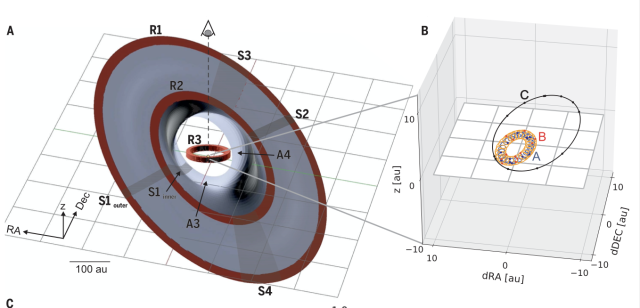
https://arstechnica.com/science/2020/09 ... backwards/
On Monday, a Long March 4B rocket launched from China's Taiyuan Satellite Launch Center carrying a remote-sensing satellite. This 50-year-old spaceport is located in north-central China, about 500km to the southwest of Beijing.
As often happens with the first stages of Chinese rockets launching from the inland Taiyuan facility, the spent Long March 4B booster fell downstream of the spaceport. In this case, it landed near a school, creating a predictably large cloud of toxic gas.
Unlike most of the world's spaceports, several of China's launch sites are located at inland locations rather than near water to avoid such hazards. For security purposes, China built three of its major launch centers away from water during the Cold War, amid tensions with both America and the Soviet Union.
In recent years China has begun to experiment with grid fins to steer its rockets back to Earth—and eventually to potentially land boosters like SpaceX does with its Falcon 9 rocket. However this project seems driven more by a desire to master reuse technology than to protect its population, as China has been launching from Taiyuan since 1968 with seemingly little regard for nearby residents.
Compounding the problem of dropping rocket first stages on the surrounding countryside is that China continues to use toxic hydrazine fuel for its first stages. Hydrazine, which is two nitrogens bound together by hydrogen atoms, is an efficient, storable fuel. But it is also highly corrosive and toxic.
https://arstechnica.com/science/2020/09 ... nge-cloud/
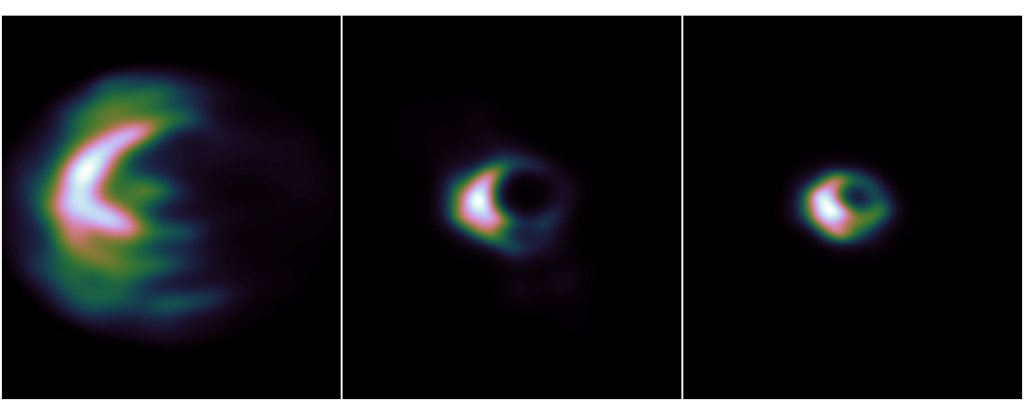
Last year, the astronomical community achieved an absolute wonder. For the very first time, the world collectively laid eyes on an actual image of the shadow of a black hole. It was the culmination of years of work, a magnificent achievement in both human collaboration and technical ingenuity.
And, like the best scientific breakthroughs, it opened a whole new world of enquiry. For a team led by astrophysicist Hector Olivares from Radboud University in the Netherlands and Goethe University in Germany, that enquiry was: how do we know M87* is a black hole?
"While the image is consistent with our expectations on what a black hole would look like, it is important to be sure that what we are seeing is really what we think," Olivares told ScienceAlert.
"Similarly to black holes, boson stars are predicted by general relativity and are able to grow to millions of solar masses and reach a very high compactness. The fact that they share these features with supermassive black holes led some authors to propose that some of the supermassive compact objects located at the center of galaxies could actually be boson stars."
So, in a new paper, Olivares and his team have calculated what a boson star might look like to one of our telescopes, and how that would differ from a direct image of an accreting black hole.
Boson stars are among the strangest theoretical objects out there. They're not much like conventional stars, except that they're a glob of matter. But where stars are primarily made up of particles called fermions - protons, neutrons, electrons, the stuff that forms more substantial parts of our Universe - boson stars would be made up entirely of... bosons.
These particles - including photons, gluons and the famous Higgs boson - don't follow the same physical rules as fermions.
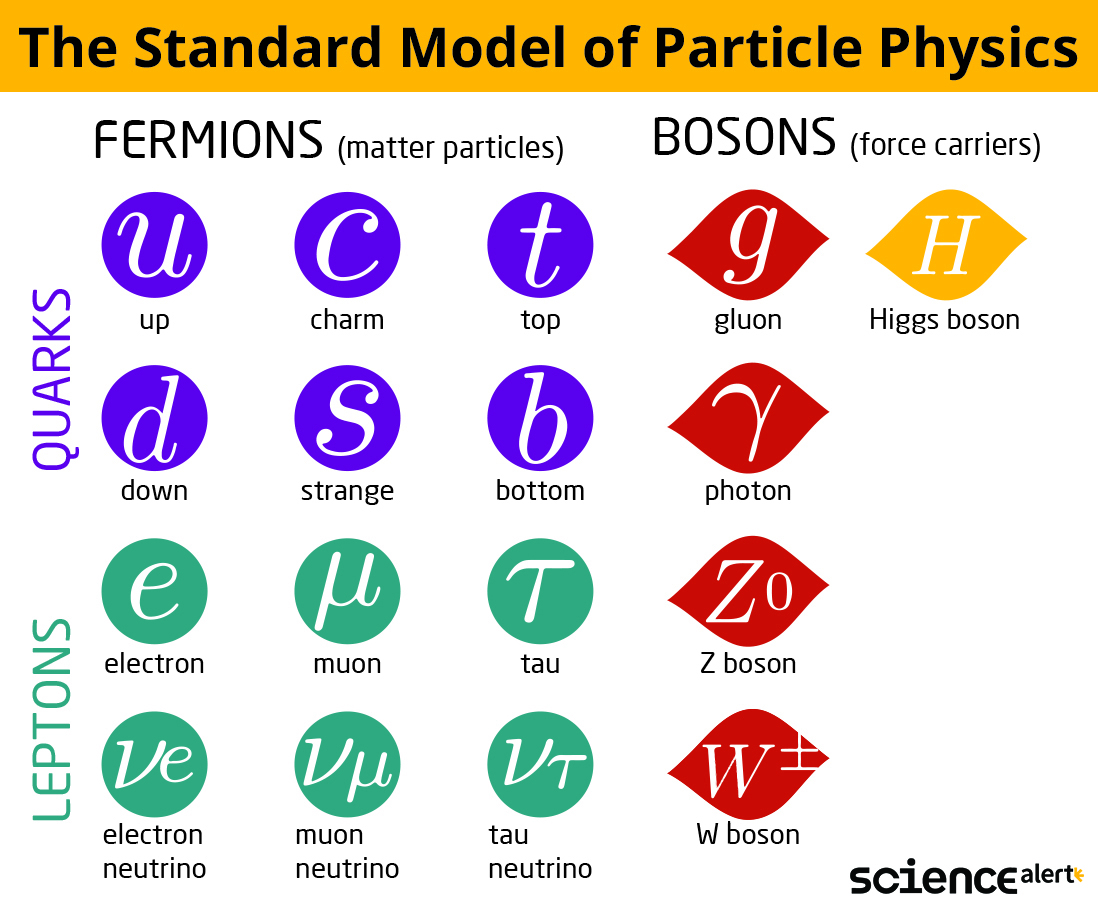
Fermions are subject to the Pauli exclusion principle, which means you can't have two identical particles occupying the same space. Bosons, however, can be superimposed; when they come together, they act like one big particle or matter wave. We know this, because it's been done in a lab, producing what we call a Bose-Einstein condensate.
In the case of boson stars, the particles can be squeezed into a space which can be described with distinct values, or points on a scale. Given the right kind of bosons in the right arrangements, this 'scalar field' could fall into a relatively stable arrangement.
https://www.sciencealert.com/there-coul ... lack-holes
Previous 1 ... 175 176 177 178 179 180 181 ... 241 Next